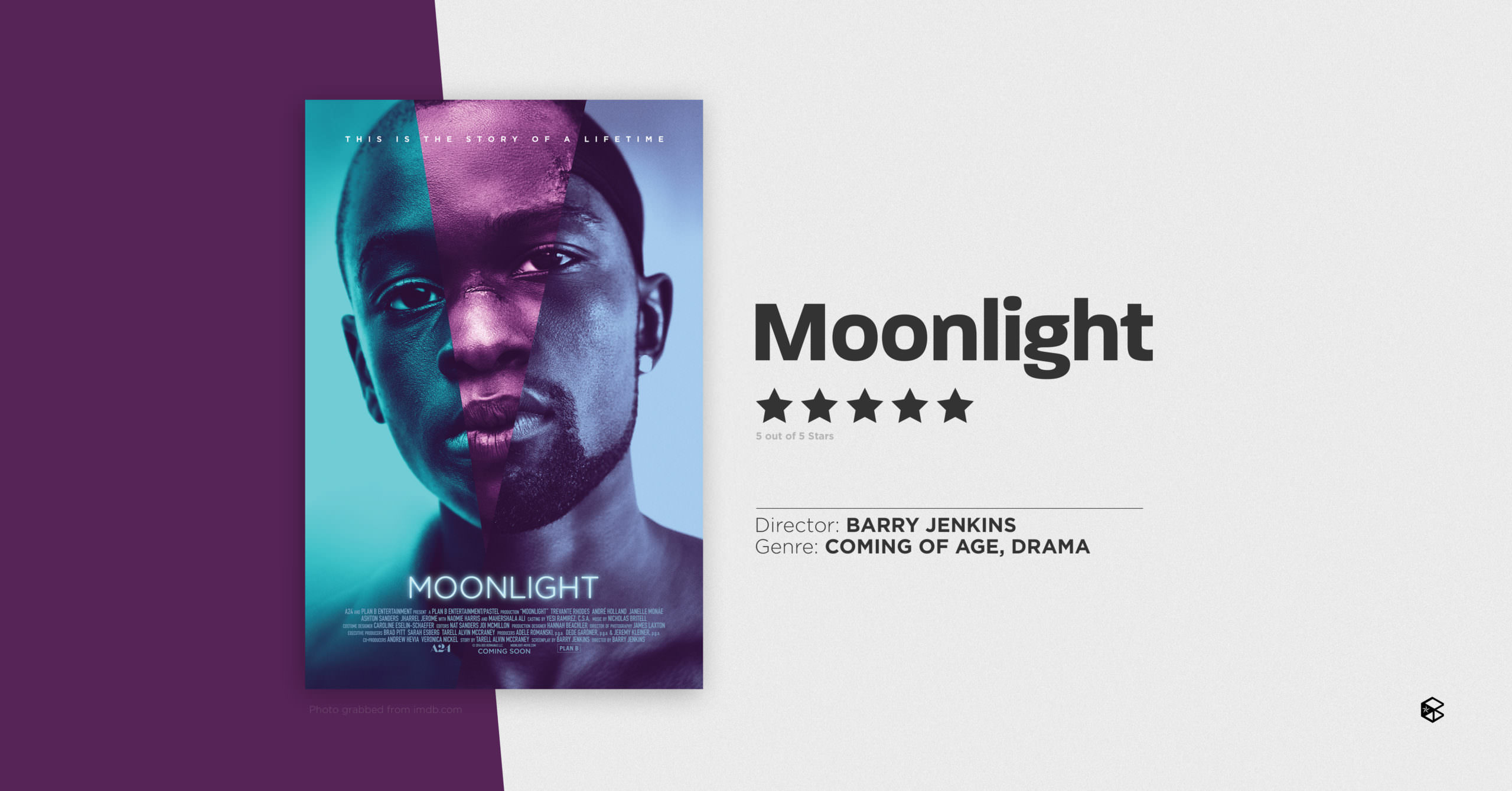With its substantial portrayal of gay relationships, Dir. Barry Jenkins’ LGBTQIA+ debut film, Moonlight (2016), made a cultural impact on audiences, taking on the perennial existence of toxic and fragile masculinity as it affects one’s life.
A studio known for its independent films (The Lighthouse, Lady Bird, The Spectacular Now) yet with high-production quality, A24 Films produced Moonlight that garnered 2017 Academy-Awards’ “Best Motion Picture of the Year,” “Best Supporting Actor” (Marshehala Ali), and “Best Adapted Screenplay.”
The film features cast Trevante Rhodes (Birdbox) as adult Chiron, Marshehala Ali (The Hunger Games: Mockingjay) as Juan, Chiron’s father-figure, Naoimie Harris as Paula, Chiron’s Mother, and Andre Hollis (American Horror Story) as Chiron’s best friend Kevin.
Hues of adolescence
The film presents itself majorly in blue and green color schemes. With Chiron’s childhood, the green and blues were pleasing to the eye where they depicted cold and uncomfortable by adolescence. Plants and greens are also present in the film; a symbolism of growth.
Water is a powerful element in the film, a form of cleansing. Whenever Chiron goes into a transition in his life—we see the ocean with him as a boy, happy; and even as a teenager, as he finds out about his homosexuality. He washes his face twice, and the next thing we know—he is now a full-grown adult.
The image of a “real man”
A story divided in three chapters—childhood, adolescence, and adulthood—Moonlight revolves around a protagonist named Chiron who struggles in finding his identity as a homosexual, in a Black and masculine society, while being in an abusive household of his drug-addict mother, afterwhich he soon meets his father figure, who is actually a dealer.
In the film, we enter a toxic world of masculinity. Toxic masculinity is perceived as the idea of males maintaining an image of “hardness” like showing vulnerable emotions. Crying, for instance, is seen as a weakness—where men around Chiron appear to be tough and almost apathetic. There’s even an explicit statement from Kevin saying that he does not cry, but sometimes he tries to.
These small details in Moonlight evoke humanness in its viewers.
To add, the problem with toxic masculinity isn’t only on how it overpowers and shelters the other aspects of what a man should be, but it also by erasing the idea of soft, fragile, and vulnerable men.
Aside from the themes of homosexuality, Chiron is exposed into the influences of cycles of drugs, a result of parents enslaved by narcotics. From Chapter I and II, the impact of Chiron’s physically and emotionally abusive mother may have affected his personality. Her mom calls him the derogatory term “faggot.” And there comes Juan, who accepted him as a lost boy, who taught him survival—the more parent than Paula could ever be.
In the last chapter of his adulthood, Chiron now has a bulky physique, wearing gold and boxing braces. He falls under the shadow of his father-figure Juan as he succumbs to the pressures of society of what a “real man” is: from being someone who uses violence to be dominant, a masculine figure; to embracing the fear he once had, and becoming it.
Aftermath of abuse to the person
Ultimately, Moonlight introduces humane and slice-of-life themes with brevity. With the concept of Black masculinity, wherein appearing to be soft or outside this “alpha male” identity could make one a target, are present in today’s culture and society.
With its storyline told in the most simplistic way, Moonlight teaches us that we are constantly shaped by the influences around us. At the end, everyone is going to choose a life; to stand up and fight—as no one else will conquer toxic outcries but our own selves.


